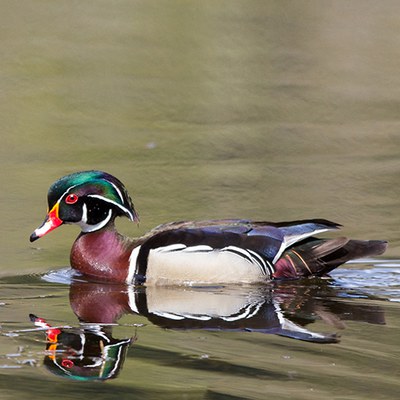Wood Duck (Aix sponsa)
Information · 7 months ago
Wood ducks are one of the most strikingly beautiful ducks in the waterfowl family. The males have unmatched iridescent shimmering greens, purples, and pinks decorating their crested heads, backs, and wings. The rest of their bodies vary in ornate patterning; their sides look like a sepia tone topography map, while their breast is the color of a mottled chestnut shell, and their wing speculum a polished sapphire. The females, while less colorful, sport an elegant gray silver head with a white accent around their eyes, their breasts like granite, and a bright shimmer of color pokes out from their wing bands. Wood ducks are one of few species whose strong claws can grip bark, allowing them to perch in trees. They are similar in size to a hooded merganser. The preferred meal for the truly omnivorous wood duck is mostly seeds, with some aquatic plants and insects. In many parts of the country, wood ducks rely on acorns as a major source of their diet. These ducks typically dabble and only do shallow diving. Wood ducks are also cavity nesters and they love areas that are thickly wooded or highly vegetative (like large cattail marshes and beaver ponds). Wood ducks can be spotted at Camp Polk Meadow Preserve in the cattails. Their small stature and short, broad wings make them highly maneuverable in these areas. These ducks lay nine to 14 eggs and often will lay eggs in other mother’s nests, sometimes called “dump nests,” where there is no incubation. These are some of the only ducks that will have two broods of ducklings a year (more common in southern North America than northern).
